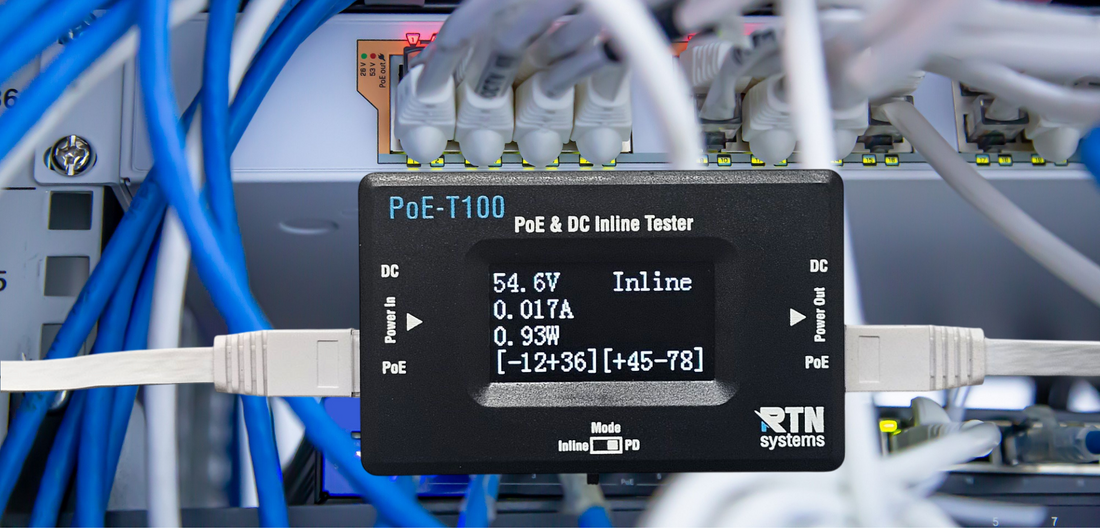One of the persistent challenges in Power over Ethernet (PoE) testing involves the limitations of many inline PoE testers. Often, these devices aren't truly "inline" in operation where they allow the negotiation to pass-through the tester. The typical workflow requires an initial PoE negotiation between the Power Sourcing Equipment (PSE) and the tester before the Powered Device (PD) can be connected. Essentially, the tester is the one negotiating the power, and the PD ends up receiving power passively from the tester, rather than engaging in direct negotiation with the PSE. This workaround defeats the purpose of true inline testing. The PD never requests the power level it wants. Let's say the tester negotiates a lower power level; then the PD is stuck with having to use the lower power granted by the PSE to the tester. If it draws too much power, the PSE will disconnect it.
Consider the scenario where you need to analyze the load a PD places on the PSE. With traditional inline testers, inserting the tester between the PSE and PD disrupts the crucial negotiation process. The PSE relies on this negotiation to correctly identify, classify, and provide power to the PD according to the IEEE 802.3 standards (including 802.3af, 802.3at, and 802.3bt). The PSE performs signature detection by applying a voltage and measuring the resulting current to determine the PD's presence and classification. Any additional device in the line, including an inline tester that draws current or introduces resistance, can alter these measurements. This interference frequently leads to misclassification or, more often, the PSE's failure to supply power to the PD altogether. Designing an inline tester that remains transparent** to this negotiation is a significant engineering hurdle.
The PoE-T100 addresses this challenge with a true inline design which allows passing through the negotiation through the teser. In inline mode, the PoE-T100 allows for flexible connection sequencing: the PD or PSE can be connected in any order. The device is designed to remain in an off state initially, effectively providing a direct electrical path between the PSE and the PD. By minimizing its own current draw, the PoE-T100 avoids interfering with the critical discovery and classification process.
To elaborate on the negotiation process, the PSE initiates signature detection by applying a voltage (within a range, as defined by the standard) and measuring the current. This process is repeated with different voltages to accurately determine the PD's power requirements. Once the PSE has successfully identified and classified the PD, it supplies the appropriate power (within the voltage range specified by the PoE standard, e.g., 34V to 57V). The PoE-T100 is engineered to only draw significant power and fully activate after this negotiation is complete and the PSE begins delivering full power. In its fully operational state, with the OLED display active, the PoE-T100 exhibits a current draw of no more than 16mA.
To learn more about how the PoE-T100 can streamline your PoE testing and provide accurate, real-world analysis, visit our product page at https://rtnsystems.com/products/pt100-poe-and-dc-inline-tester
** Explanation of "Transparency":
In the context of PoE testing, when we say the PoE-T100 is "transparent" to the negotiation process, it means that the tester, while physically situated between the PSE and PD, does not actively participate in or significantly alter the negotiation and signaling that occurs between them. It allows the PSE and PD to interact, to a degree, as if the tester weren't there, ensuring that the negotiation process (discovery, classification, etc.) happens directly between the two devices according to the IEEE 802.3 standard. Of course, adding the device introduces a small amount of resistance. However, in most cases, this resistance is small enough not to affect the PSE-to-PD negotiation.

